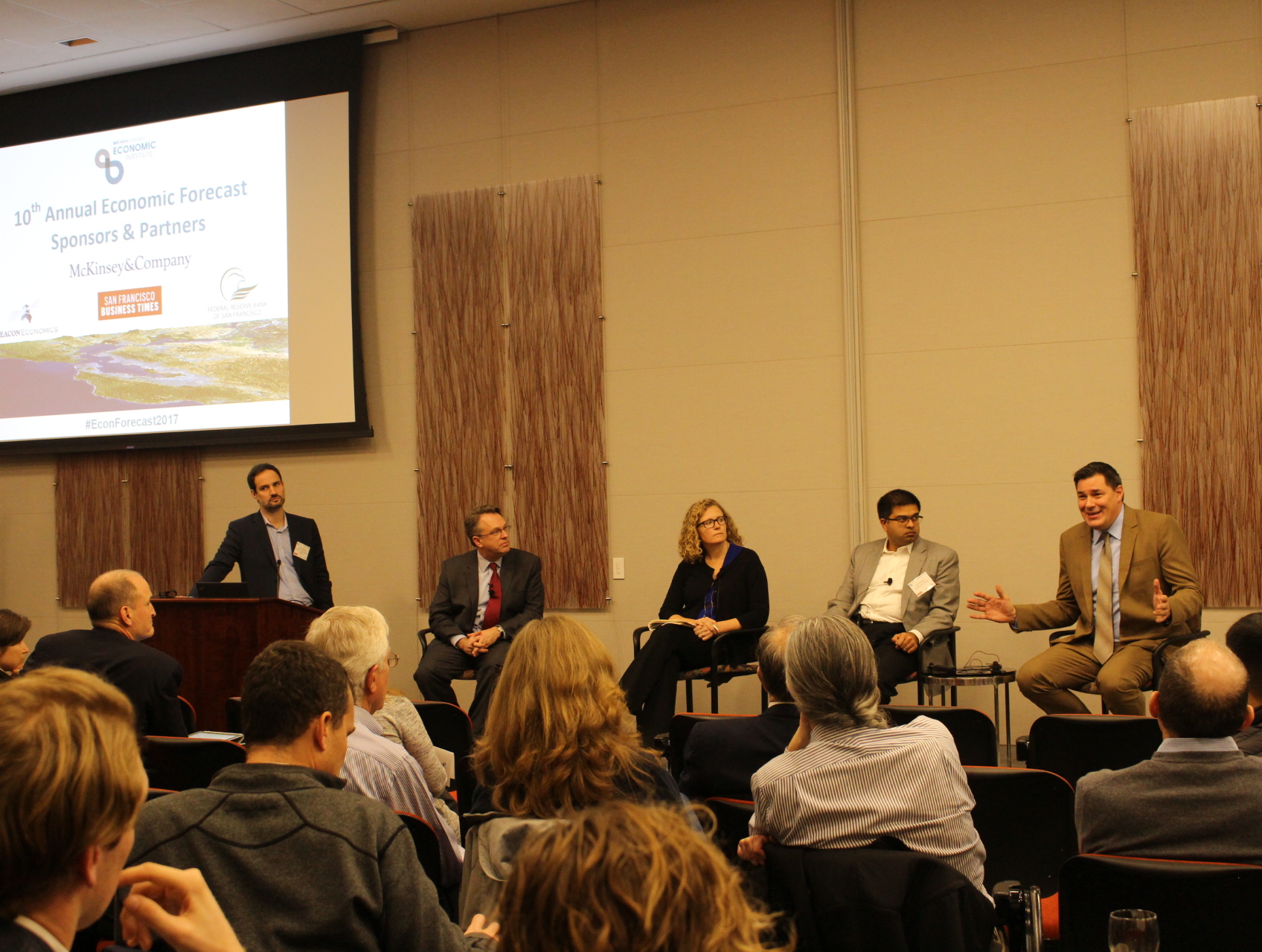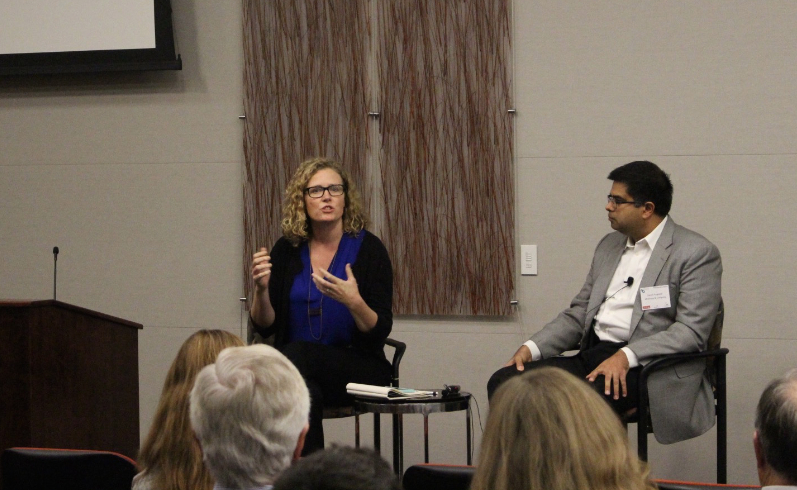
As the world watched the inauguration of President Donald Trump, the Bay Area Council Economic Institute’s 10th Annual Economic Forecast presented by McKinsey & Company and hosted by the Federal Reserve Bank of San Francisco convened leading economists and top experts to give their economic forecast for the Bay Area, California, and the nation.
The prognosis was clear. As we usher in the new administration, we are on stable footing. Dr. Christopher Thornberg, Founding Partner of Beacon Economics and a leading expert on the California economy, presented on a set of economic indicators, showing that much of the national political rhetoric around stagnant wages, the impact of trade, and unemployment is not borne out in the economic data. Labor markets are tight and becoming tighter across most of the United States. This is particularly true in California where the housing supply problem is one of the biggest challenges to continued growth. He also assessed that, while GDP is growing relatively slowly, it is growing and economic fundamentals, such as consumer spending, remain strong. Among the challenges cited for slow growth were self-inflicted wounds and political gridlock, a weak global economy, and the shift to an information economy among others. And, while there is little chance for a recession (for now), uncertainty surrounding the new administration’s policy agenda clouds the view forward. There are broad ramifications for potential change in policy in healthcare, immigration, social insurance, trade, manufacturing, and more.
San Francisco Fed President and Council Executive Committee member John Williams offered an exclusive perspective on the U.S. economy and federal monetary policy. Williams talked about the dynamics surrounding the U.S. labor market and how the Fed is likely to gradually increase its interest rate targets over time so that the economy grows without risking a bubble. Williams emphasized how the central bank is not influenced by partisan politics, staying politically independent, data-driven and focused on its narrow goals to promote low inflation, full employment and financial stability.

Bay Area Council Economic Institute Chair and McKinsey & Company Western Region Managing Partner Kausik Rajgopal and Aspen Institute Fellow Natalie Foster explored the “Future of the Worker” in the new age of automation and the growing gig economy. In the Bay Area, the independent workforce is 30 percent of the working age population with most digital independents working in order to earn when traditional jobs falter, to provide extra income for high cost of living or to buffer uneven income streams. One of the key points discussed was how automation is focused on specific activities rather than entire jobs, and can spur more job growth.